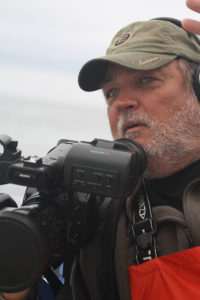 I have been told many times that I have the best job in the world. My answer is always the same: I don’t have a job; I have a lifestyle. I’m 75, and if it was a job, I would have retired 11 years ago. As a matter of fact, I did try to retire once. It lasted a few months, and then I was bored. Why would I quit? What was I going to do? Go fishing? I had no need to travel; I have been travelling for years. I did a fishing show in Belize. In Venezuela, I did a fishing show. Same for Bermuda, Thailand, Dutch Harbour, Mexico, Baja, Northern Quebec, Nova Scotia, Central Alaska, The Katmai, the Amazon Basin, and a load of lodges and locations across North America.
I have been told many times that I have the best job in the world. My answer is always the same: I don’t have a job; I have a lifestyle. I’m 75, and if it was a job, I would have retired 11 years ago. As a matter of fact, I did try to retire once. It lasted a few months, and then I was bored. Why would I quit? What was I going to do? Go fishing? I had no need to travel; I have been travelling for years. I did a fishing show in Belize. In Venezuela, I did a fishing show. Same for Bermuda, Thailand, Dutch Harbour, Mexico, Baja, Northern Quebec, Nova Scotia, Central Alaska, The Katmai, the Amazon Basin, and a load of lodges and locations across North America.
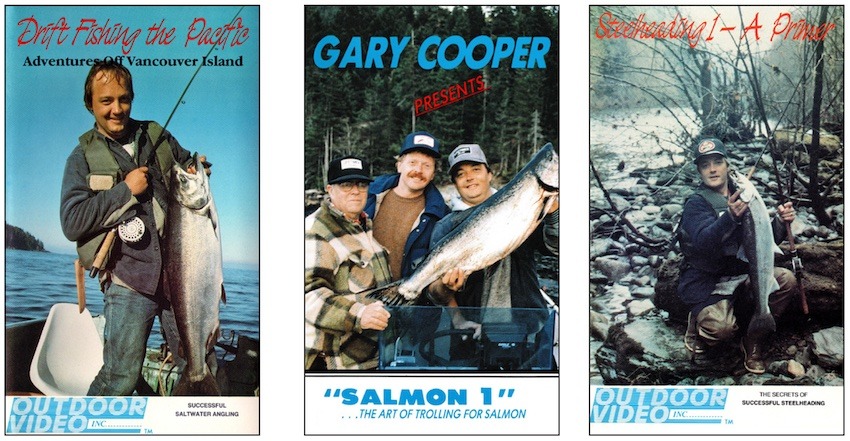
So how did I end up producing nearly 1,000 fishing productions over 36 years?
It started in 1984. My spare time was devoted to the outdoors. From December to March, I fished steelhead. From April to June, it was trout fishing. June to September was salmon, and from mid-September to mid-December, I hunted.
That winter I had purchased a betamax camera and recorder/player. The recorder hung around my neck and the camera was a bulky piece of equipment that allowed me to record the worst, grainiest video by today’s standards.

At the time, it was high-tech. I would lug this around to some of my steelhead spots with my buddies, and we would record some pretty incredible segments of steelhead fighting in our island rivers.
At the same time, the video player and video rental business was taking off. It was well over a $1,000 to buy a video cassette player, and movie titles were limited. I had heard that Jane Fonda was making more money in her workout videos than in her movie career, and I came to the conclusion that in my world, a lot more people would be interested in educational fishing videos than working out, and my mind lit up with the possibility of getting rich by producing these videos. My only problem was that I knew nothing about video production and had no capital to set these wheels in motion.
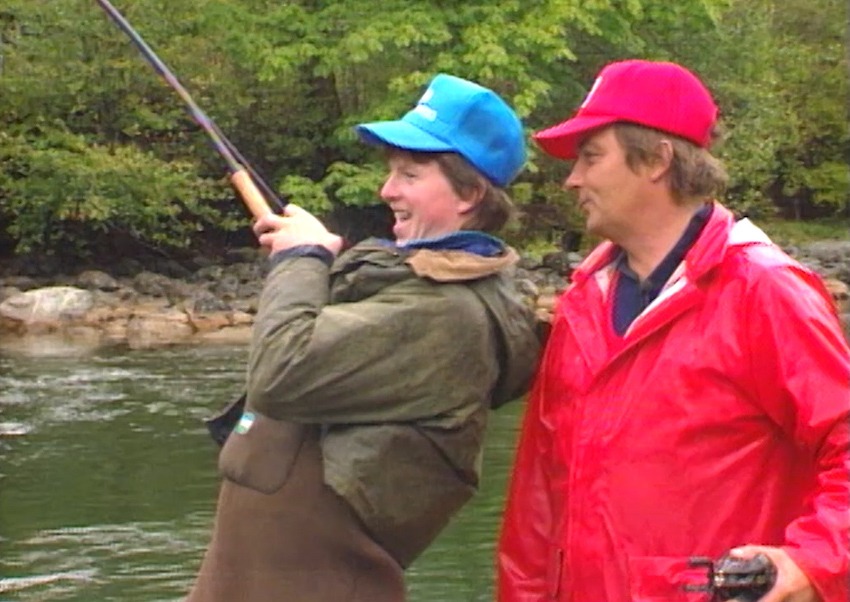
I found a small production company that as willing to produce three 1-hour videos for $15,000.00. I formed a company called Outdoor Video with a friend in the legal field. We set up a share structure and began the search for investors. Within a few days shares were issued and money was in the account. It was time to get to work.
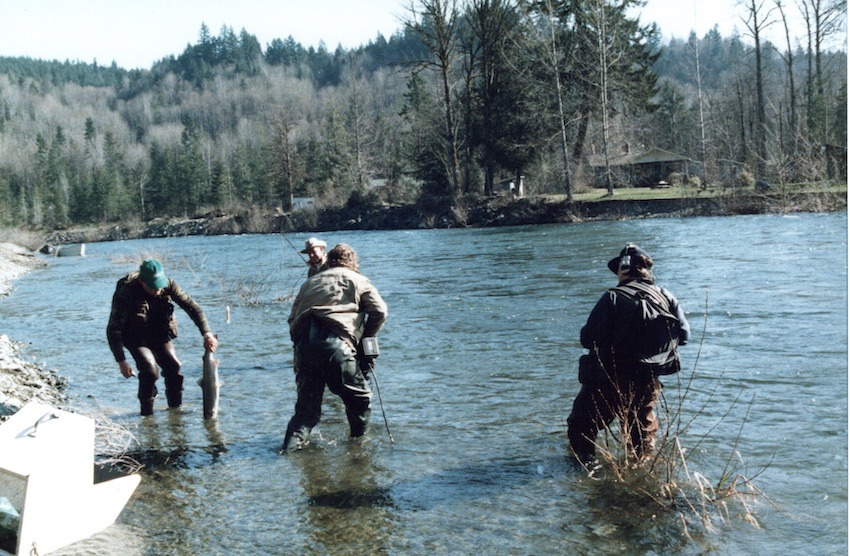
When dreams become a reality, it can be a shock that the reality is not close to the dream. I was terrible in front of the camera. Completely unnatural, I looked like I was always trying to sell something. I could tell this was going to take time and practice. My memory would go blank, and I even had a hard time narrating from a script. It always sounded unnatural and obvious that I was reading. My partners were getting very concerned and wondered what the heck they bought into.
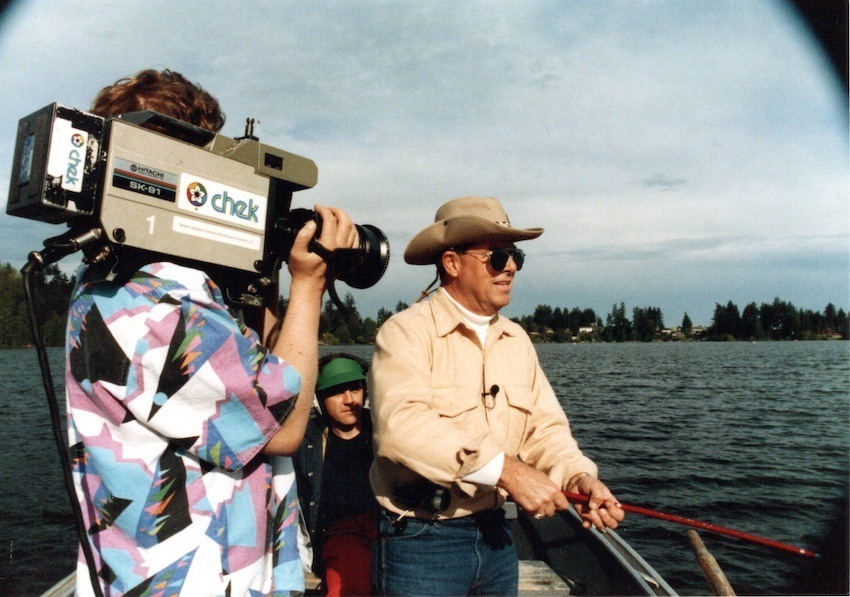
The partners were good friends with a person who was a giant in the sport-fishing industry. His name was Bob Wright, and he was the founder of Oak Bay Marine Group. Wright was the king of the sportfishing industry, the owner of marinas and lodges that dotted British Columbia’s west coast.
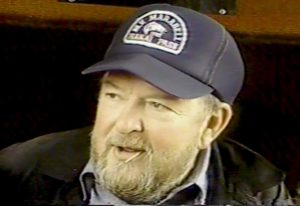
A legend that had his hands on the pulse of the industry, he was respected by anglers and feared by politicians. My first meeting with him went fairly well. Wright had a new fishing operation in Hakai Pass on the west coast of Central BC. It was a ship called the MV Marabell, a retired Canadian minesweeper that was refurbished to feed and house fishermen wanting to fish from the train of small fishing vessels in and around the remote waters of Hakai Pass.
The Hakai Experience
I was to accompany the production company on a flight from Vancouver to Hakai to film an adventure and educational fishing video in these remote waters known for big salmon. Wright and some of his friends were to accompany us to keep an eye and assist in the production if need be.
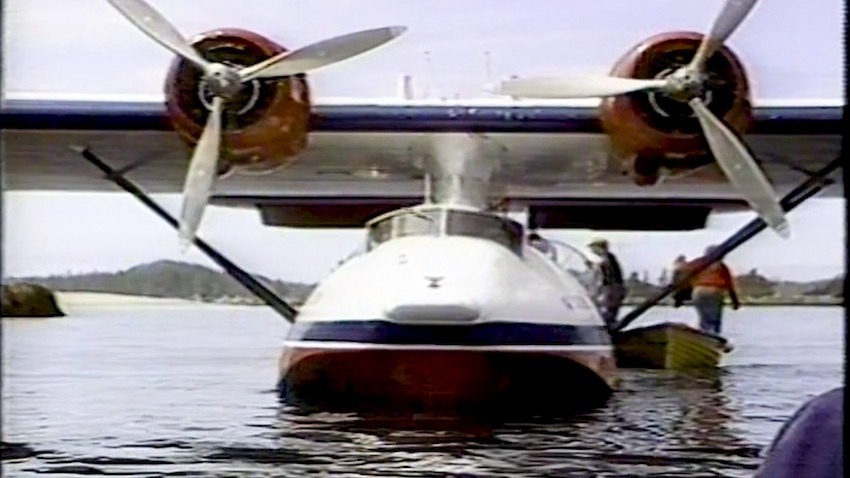
It was game on. The fishing was a success, as I led one of our camera crew Ann Wolfe into the first fish she had ever caught.
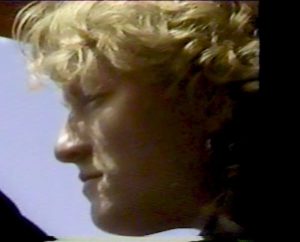
The beast hit at 4 p.m. in a hole of water at Odlum Point where an angler had pulled in a 30-pounder the day before. I wanted to hug and own the spot on the same tide the following day. The fish took a mooched cut plug that I had trimmed down to imitate the small bait in the area. One single 3.0 octopus hook was all that held the bait. The line was vertical and 36′ down when he bit. I struck hard, and if it wasn’t for the big slow headshakes, I would have surmised that I was on bottom. The line started to lift, and the reel turned to screaming. I handed the rod to Ann, advising her to keep her fingers away from the knuckle- busting power of the reel.
The camera boat was up and running, and I was at the tiller taking chase to the fish. We were towed far from where we first hit the fish. I could not tell what point of land we came from. I am sure that the fish had taken us a couple of miles out of the Channel. At this point, the fish sounded. How deep we did not know. The fish would not budge. He kept his head in a downward motion, and you could see the tail surges on the strained rod tip. Ann wanted to give up. She was an athletic woman of 25, and she felt beaten by this fish. I taunted her and told her that I had seen young boys fight harder than her. The fight continued, and as the light of day was quickly fading, we found that the fish had taken us back to where we first hooked it, Odlum Point. The hog finally came to the net. As Ann lowered the rod she burst into tears. She was exhausted.
She had just landed a bright early June Chinook that hit the scales at 52 lbs. When the fish was cleaned, his guts were full of herring heads that had been discarded from fishermen cutting plugs. My small herring fit in perfectly to his target.
And so it began. I now had a video shot that was edited into a video called “The Hakai Experience.” I had earned the respect of the most influential businessman and fisher in Canada, and I had just completed the first of many productions to come.
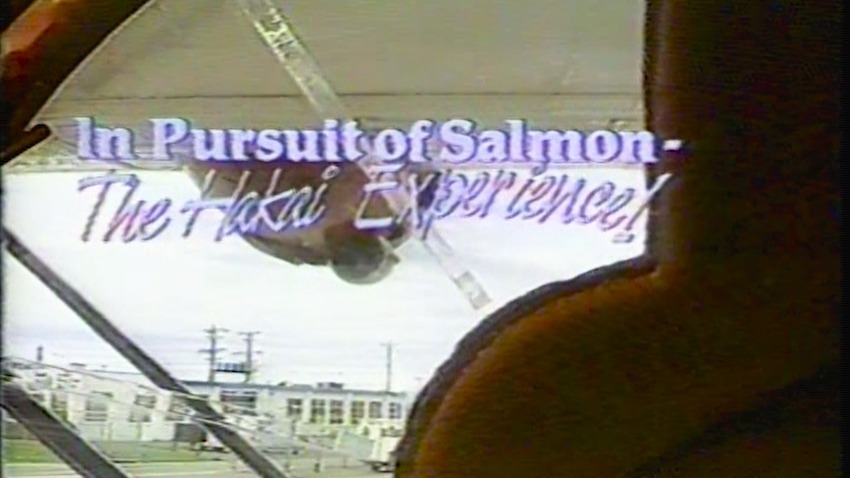
This was the start of my story. The road got tougher as I continued on this journey. There is a lot more to come.
“Gary Cooper’s Fishing Diary” first aired on CHEK Television in 1989 and ran until 1999. During this period it was the only fishing show available that featured our West Coast fisheries with adventures, and education. In 2022, Gary Cooper’s Fishing Diary returns to TV. It’s an opportunity to learn from the past, and help those who want to fish in our future. Gary integrates past stories with a narrative that provides insight into the many episodes of Gary Cooper’s Fishing Diary. Tune in on Saturdays on Chek or Tuesdays on WildTV (subscription required).
This article appeared in Island Fisherman Magazine. Never miss another issue—subscribe today!







I met gary one evening in Abbotsford. We had a great chat that lasted a few hours. Great memory.
My Dad and his twin Brother Dan And Dennis Warrick went out with Gary Cooper in 1996,97 and Dan has pasted away but my uncle Dennis is still alive and would like to go out with Gary one more time